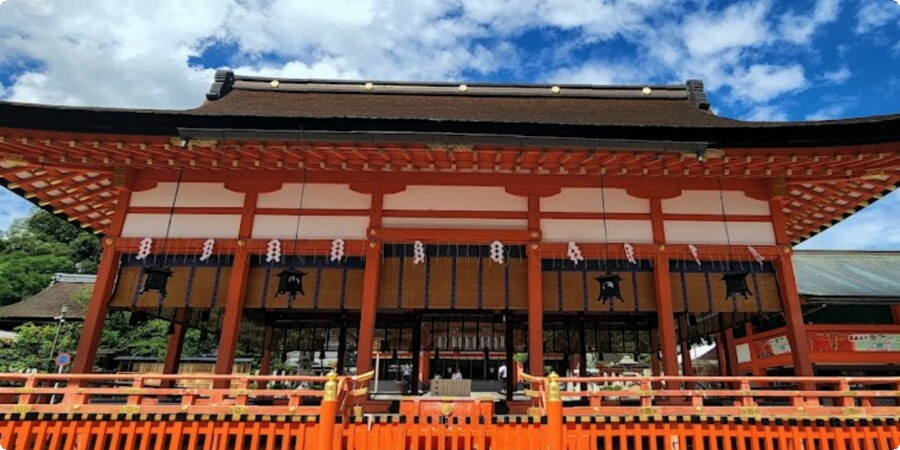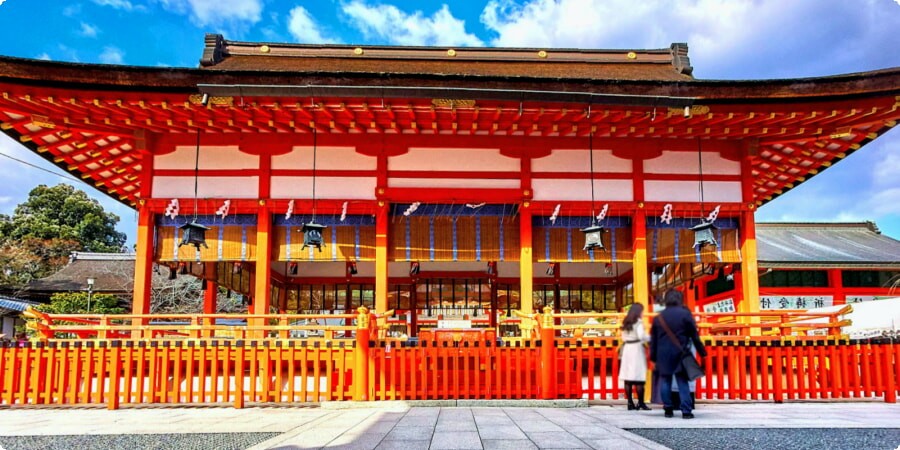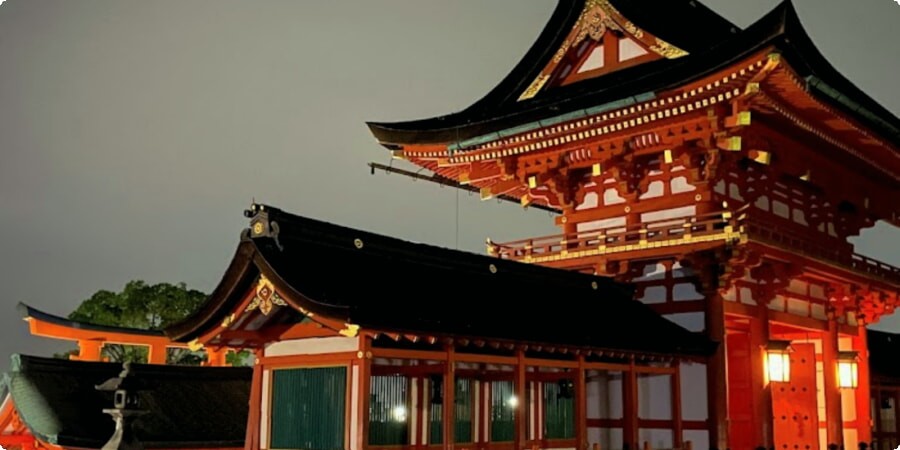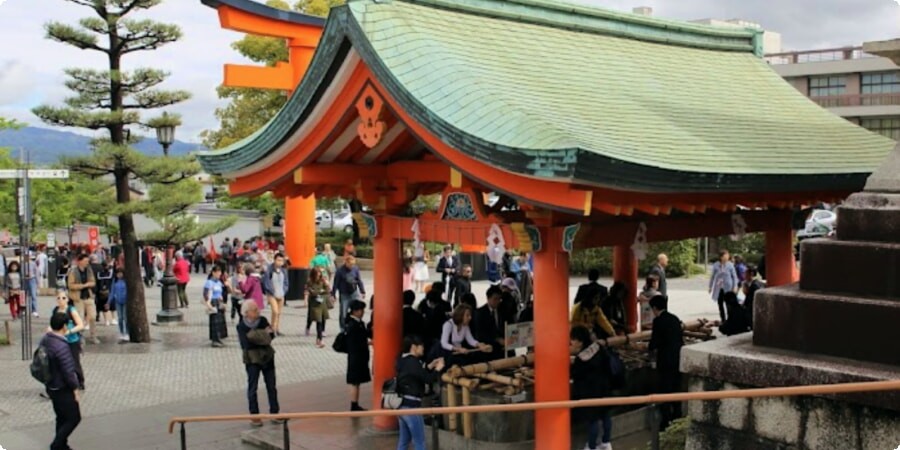Fushimi Inari: Exploring the Mystical Gates of Japan
Welcome to Fushimi Inari, a place where mysticism meets tranquility in the heart of Japan. Nestled in the southern part of Kyoto, Fushimi Inari Shrine stands as a testament to centuries of tradition, spirituality, and cultural heritage. In this article, we invite you to embark on a journey with us as we explore the mystical gates of Fushimi Inari, unraveling the secrets and stories that have captivated visitors for generations.
History and Origins
To truly appreciate the enchantment of Fushimi Inari, one must delve into its rich history and origins. Dating back to the 8th century, Fushimi Inari Shrine is dedicated to Inari, the Shinto god of rice, prosperity, and business. Over the centuries, the shrine has evolved into a symbol of good fortune and spiritual devotion, drawing pilgrims and visitors from near and far.
Legend has it that Inari's messenger, a fox, was said to guard the rice fields and bring prosperity to the farmers. As a result, foxes are revered as sacred animals at Fushimi Inari Shrine, and many stone fox statues can be found throughout the grounds.
Learn more about Fushimi Inari Shrine's history on Wikipedia
Explore Fushimi Inari Shrine on Google Maps
The Iconic Torii Gates
One of the most iconic features of Fushimi Inari Shrine is its mesmerizing torii gates, which form a path leading up Mount Inari. These vermilion gates, known as "senbon torii" or "thousands of torii gates," create a striking visual spectacle that is both awe-inspiring and mystical.
Walking through the tunnel of torii gates is a surreal experience, as shafts of sunlight filter through the wooden structures, casting a warm glow on the moss-covered pathways. Each gate is inscribed with the name of the donor, ranging from individuals to businesses, who have contributed to the shrine over the years.

The torii gates are not only a symbol of spiritual passage but also serve as markers along the trails that wind through the forested slopes of Mount Inari. As you ascend the mountain, you'll encounter smaller shrines, stone lanterns, and statues dedicated to Inari and the fox spirits, creating a sense of reverence and serenity amidst the natural beauty of the surroundings.
To make the most of your visit to Fushimi Inari, we recommend booking a rental car through Sol Rent A Car. With a car at your disposal, you'll have the freedom to explore Kyoto and its surrounding areas at your own pace, allowing you to immerse yourself fully in the magic of Fushimi Inari and beyond.
Exploring the Shrine Grounds
As you step onto the grounds of Fushimi Inari Shrine, you'll find yourself immersed in a world of tranquility and spirituality. The shrine complex encompasses not only the iconic torii gates but also a variety of other structures and sacred areas waiting to be explored.
-
Main Shrine Buildings: Begin your journey at the main shrine buildings, where visitors come to pay their respects, offer prayers, and make offerings to Inari. Admire the intricate architecture and ornate decorations that reflect centuries of craftsmanship and devotion.
-
Subsidiary Shrines: Venture deeper into the shrine grounds to discover smaller shrines dedicated to various aspects of Inari's domain, including agriculture, commerce, and the arts. Each shrine offers its own unique atmosphere and spiritual significance, inviting visitors to pause and reflect in quiet contemplation.
-
Sacred Forest: Surrounding the shrine complex is a lush forest that serves as a sanctuary for wildlife and a place of refuge for visitors seeking solace and serenity. Take a leisurely stroll along the shaded pathways, and you'll encounter ancient trees, moss-covered stones, and hidden springs that add to the mystical ambiance of the surroundings.
Cultural Significance
Fushimi Inari Shrine holds a special place in Japanese culture and society, serving as a symbol of prosperity, protection, and spiritual devotion. Throughout history, the shrine has been patronized by emperors, samurai, merchants, and commoners alike, each seeking blessings and guidance from the gods.

-
Business and Commerce: Inari is revered as the patron deity of business and commerce, and many Japanese companies pay homage to the fox god by donating torii gates or offering prayers for prosperity and success. It is common to see businesses and individuals make offerings of rice, sake, or fox-shaped votive tablets at the shrine.
-
Agriculture and Harvest: As the god of rice and agriculture, Inari plays a crucial role in Japan's farming communities, where farmers pray for bountiful harvests and protection from natural disasters. Fushimi Inari Shrine holds numerous festivals throughout the year to celebrate the planting and harvesting seasons, attracting visitors from far and wide to participate in the festivities.
-
Popular Culture: Fushimi Inari Shrine has also left its mark on popular culture, appearing in literature, art, film, and television as a symbol of Japanese spirituality and tradition. The shrine's iconic torii gates have become synonymous with Japan itself, drawing tourists and pilgrims from around the world to experience their timeless allure.
Visitor Experience
Visiting Fushimi Inari Shrine is not just a sightseeing excursion; it's a journey of the soul, where visitors can connect with nature, culture, and spirituality in a profound and meaningful way. Whether you're a seasoned traveler or a first-time visitor to Japan, there's something for everyone to enjoy at Fushimi Inari.
-
Prayer and Meditation: Take a moment to pause and reflect at the shrine, offering prayers for your own wishes and intentions or simply soaking in the peaceful atmosphere. Many visitors choose to purchase an omamori (amulet) or ema (wooden plaque) from the shrine's gift shop as a token of good luck and protection.
-
Hiking and Exploration: Embark on a hike along the trails that wind through the forested slopes of Mount Inari, taking in the breathtaking views of Kyoto city below. The hike to the summit takes approximately 2-3 hours round trip, but shorter trails are also available for those with limited time or mobility.
-
Culinary Delights: After exploring the shrine grounds, why not treat yourself to some delicious local cuisine? Nearby stalls and restaurants offer a variety of traditional Japanese dishes and snacks, including grilled skewers, sushi, and matcha sweets, providing the perfect opportunity to refuel and recharge after your adventure.
For travelers seeking the ultimate convenience and flexibility, we recommend booking a rental car for your Japan journey through Sol Rent A Car. With a car at your disposal, you'll have the freedom to explore Kyoto and its surrounding areas at your own pace, allowing you to fully immerse yourself in the beauty and mystique of Fushimi Inari and beyond.

Nearby Attractions
While Fushimi Inari Shrine is undoubtedly a highlight of any visit to Kyoto, there are plenty of other attractions and points of interest to explore in the surrounding area. Here are a few recommendations for places to visit during your trip to Fushimi Inari:
-
Tofuku-ji Temple: Just a short distance from Fushimi Inari Shrine lies Tofuku-ji Temple, known for its stunning autumn foliage and iconic wooden bridge. Take a leisurely stroll through the temple grounds and marvel at the beauty of its gardens and architecture.
-
Fushimi Sake District: Discover the rich history and tradition of sake brewing in the Fushimi Sake District, home to numerous sake breweries and tasting rooms. Take a guided tour to learn about the sake-making process and sample some of Japan's finest rice wines.
-
Gion District: Immerse yourself in the charm and elegance of Kyoto's Gion District, famous for its traditional wooden machiya houses and geisha culture. Explore the narrow streets and alleyways, visit historic tea houses, and keep an eye out for geisha and maiko as they make their way to appointments.
-
Kiyomizu-dera Temple: No visit to Kyoto would be complete without a trip to Kiyomizu-dera Temple, a UNESCO World Heritage Site renowned for its panoramic views of the city and majestic wooden veranda. Wander through the temple grounds and marvel at the stunning architecture and natural beauty that surrounds you.
Cultural Insights
In addition to its natural beauty and spiritual significance, Fushimi Inari Shrine offers valuable insights into Japanese culture, tradition, and way of life. Here are a few cultural insights to enhance your understanding and appreciation of this sacred place:

-
Shintoism: Fushimi Inari Shrine is a prime example of Shinto architecture and beliefs, with its emphasis on nature worship, animism, and reverence for ancestral spirits. Take the time to learn about the basic tenets of Shintoism and how they are expressed through the rituals and practices observed at the shrine.
-
Japanese Folklore: The fox, or "kitsune," occupies a prominent place in Japanese folklore and mythology, often depicted as a shape-shifting trickster with supernatural powers. At Fushimi Inari Shrine, fox statues and motifs abound, serving as guardians and messengers of Inari, the god of rice and prosperity.
-
Traditional Arts and Crafts: Throughout the shrine grounds, you'll find examples of traditional Japanese arts and crafts, including intricate wood carvings, ceramic tiles, and calligraphy. Take the time to appreciate the skill and craftsmanship that goes into creating these beautiful works of art, which serve to enhance the beauty and ambiance of the shrine.
Immersing Yourself in the Experience
As you prepare to embark on your journey to Fushimi Inari Shrine, take a moment to set aside any expectations or preconceived notions and simply immerse yourself in the experience. Allow yourself to be swept away by the beauty, serenity, and spirituality of this sacred place, and open your heart and mind to the mysteries and wonders that await you.
Whether you're drawn to Fushimi Inari for its historical significance, cultural heritage, or natural beauty, there's no denying the profound impact that a visit to this iconic shrine can have on the soul. So go ahead, take that first step through the torii gates, and let the magic of Fushimi Inari transport you to a world of wonder and enchantment.
May your journey be filled with blessings, insights, and moments of pure joy as you explore the mystical gates of Fushimi Inari and discover the beauty and splendor of Japan's spiritual heartland.